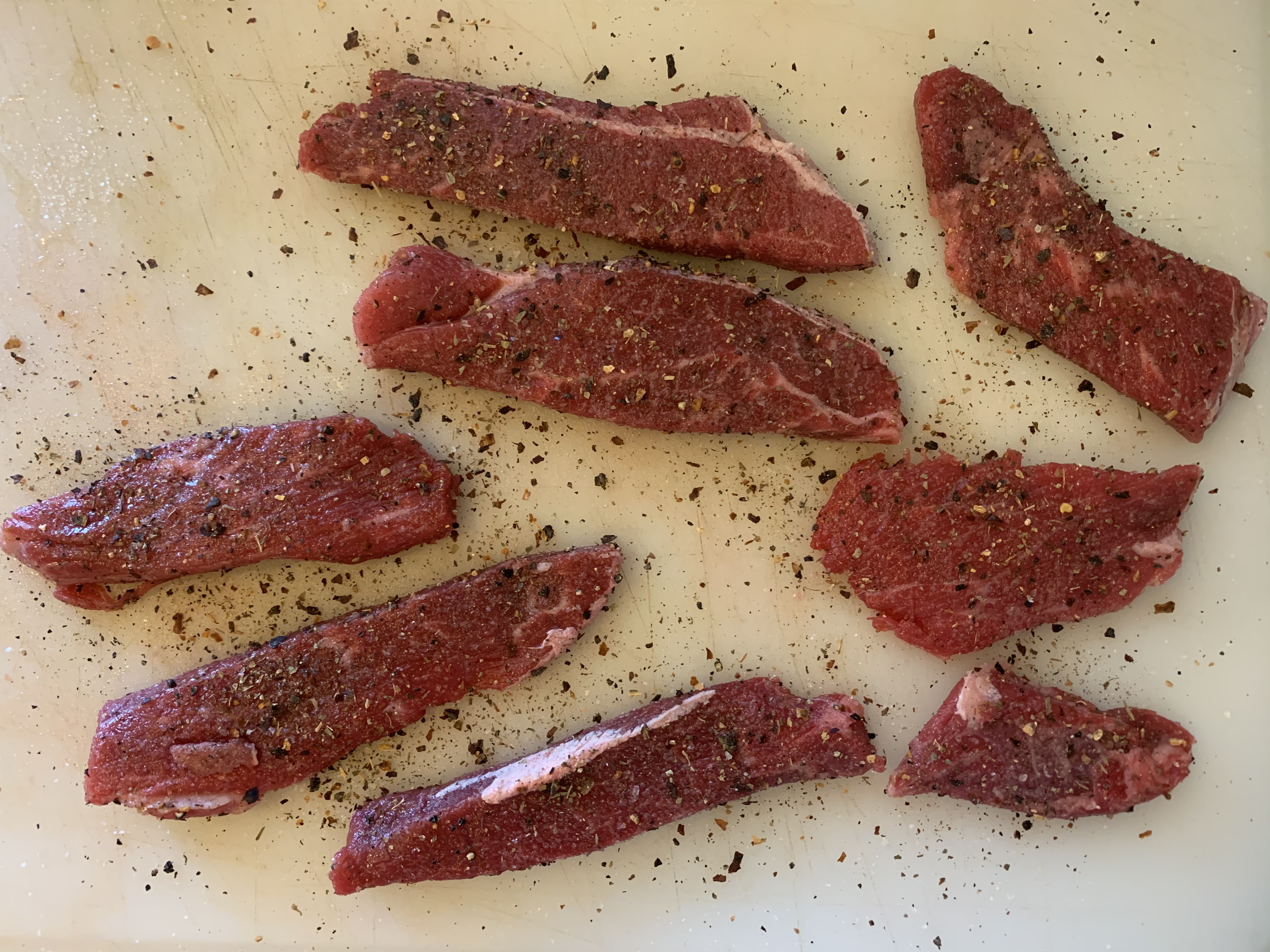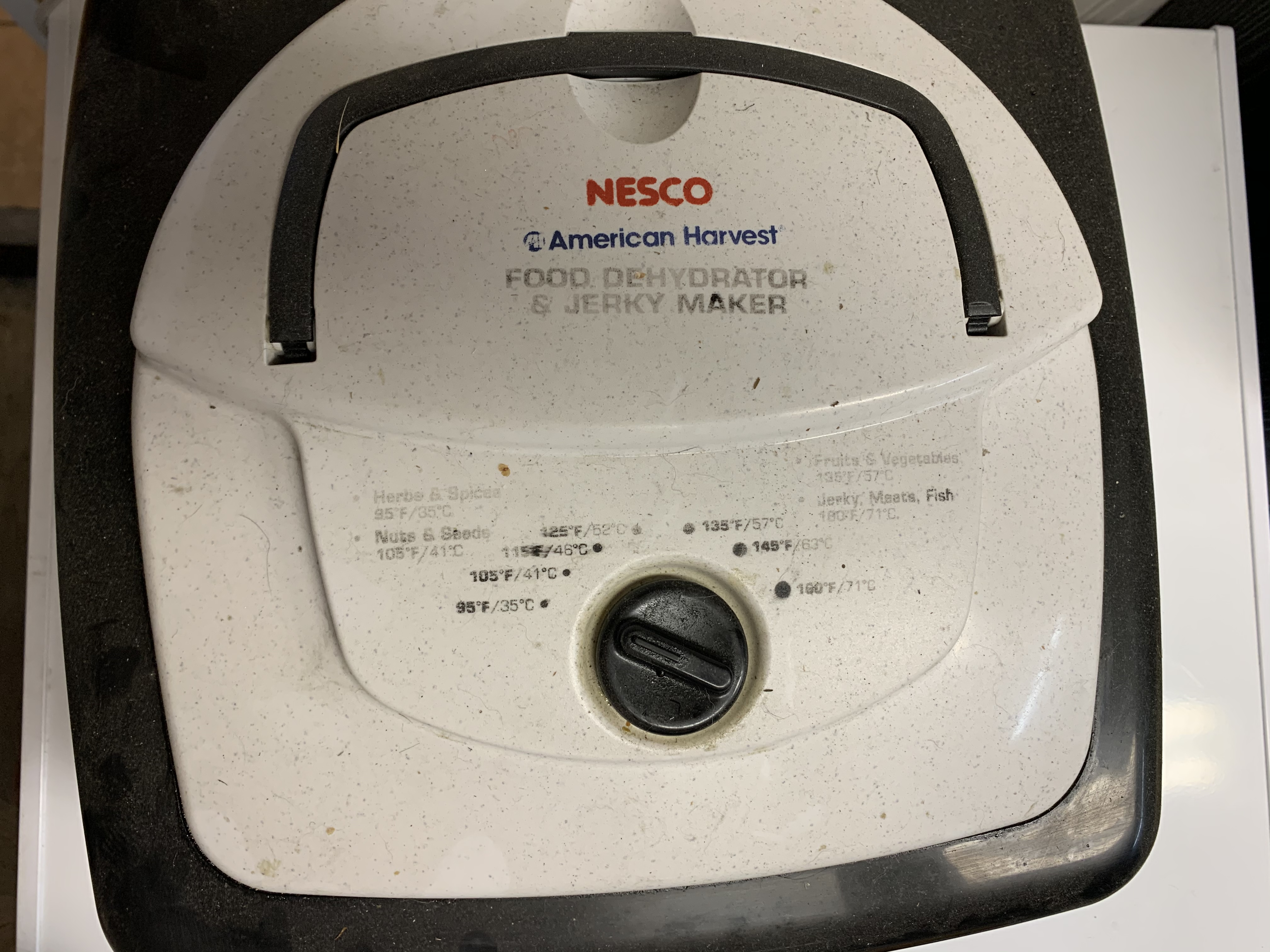
Biltong in a Dehydrator
While this is Hack Outdoors and building a biltong box is on brand, this won’t be a covid project I’ll be taking on. Purists may raise their nose at this approach, but you’re probably here because you’re wondering the same thing I am. I have a dehydrator. I’ve made plenty of wild game jerky with it. Can I make an adequate cured and dried meat product that I can call biltong in a dehydrator?
What is Biltong?
If you watch Naked and Afraid like I do, then you know what biltong is. On every South African episode, someone is bound to successfully hunt game meat and hangs meat chunks in trees. The contestants refer to these morsels as biltong. Basically, thick-cut chunks of meat are allowed to air dry in conditions that form a case, protecting the meat from harmful bacteria. Additionally, the air needs to be moving fast enough to deter any molds from developing during the drying process.
This is a technique that allows contestants to preserve meat in obvious conditions and is critical in helping contestants pass challenges.
The biltong I want to talk about is less of a survival ration and more of a delicious South African meat snack. Rather than hang meat in trees and collect what preserves properly, the prepared biltong is cured before hung to dry.
The main ingredients in prepared biltong are:
- Meat
- Non-Iodized Salt
- Black Pepper
- Coriander
- Vinegar
The ingredients are simple, but purposeful. The salt and vinegar cure for the bacteria that causes botulism, while the coriander is more of an ancient anti-microbial spice that has been continued to be used for authentic flavors. Cloves are also known to be in the mix. The process is similar to jerky – marinate it.
I used South African seasoning, salt, and black pepper for my rub, then doused with apple cider vinegar in a ziplock bag overnight.
Can I make Biltong in a Dehydrator?
Here’s where the purists and I disagree. I say yes. Traditionally, you’ll want to build a biltong box or hang meat in a dry place with plenty of airflow.
However, if you’re here because you’re wondering whether or not you can make biltong in a dehydrator, you’re probably okay with not being a purist. Frankly, I’ve found that my oldschool Nesco Dehydrator seems to be functionally appropriate. I can adjust heat and airflow up to 160-degrees F, or down to 95-degrees F.
For best results, use the lowest setting you can. The goal in using the lowest heat possible is to allow for a slower drying time than you would when making jerky. You want to avoid adding a case to the cured meat too quickly, allowing for moisture to escape from the middle of the meat.
Traditional biltong box cure times range starting at 3-days. At 95-degrees F, I’m allowing for at least 24-hours before checking on my thicker cuts. Your mileage may vary based on how dry you want your biltong or how humid your area is. Either way, making biltong in a dehydrator is totally doable and easily controlled with the right dehydrator.


